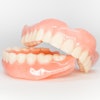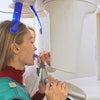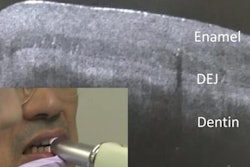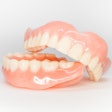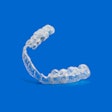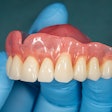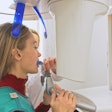
Atom probe tomography (APT) and other techniques revealed that human enamel contains small chemical flaws that may affect the resiliency of the fundamental building blocks of teeth, in a study published on July 2 in Nature.
Understanding the finer points of structure may provide clues to preventing or reversing tooth decay, according to the authors.
"With APT and correlative imaging and spectroscopy, this record is now accessible and might help decipher for instance genetic predisposition to caries or the mechanism behind molar-incisor hypomineralization," wrote the group, led by Lena Kourkoutis, a doctoral student at the department of materials science and engineering at Northwestern University.
As the major component of teeth, enamel has evolved to handle chewing a variety of foods and textures, resist mechanical fatigue, and withstand wear for decades. Developmental delays and caries cause enamel erosion and functional impairment, impacting patients' dental health and overall well-being. Researchers have studied the crystallites that compose enamel. Until now, the strength of enamel has made it difficult to uncover nanoscale images of its structure and chemical composition.
In the current study, human premolars that were extracted for orthodontic reasons were kept in 10% buffered formalin at room temperature for 10 days, then rinsed with water and dried with nitrogen gas before they underwent atom probe tomography and other techniques. The research was supported by the National Institutes of Health's National Institute of Dental and Craniofacial Research, the National Science Foundation, and the University of Virginia.
When an enamel crystallite and its hydroxylapatite atomic lattice were imaged, dark distortions were found on the lattice. Two nanometric layers with magnesium, sodium, fluoride, and carbonate ion impurities near the core of the crystal caused the dark malformations, according to the authors.
Surprisingly, these irregularities have opposing effects. They are a source of strain in the crystallite, and the distortions along with the enamel's core-shell structure may also play a role in reinforcing the enamel, making it stronger, they noted.
Though the findings are consistent with and provide an explanation for several independent observations, the data used come from both primary and permanent human enamel and include observations in other species. Therefore, a more detailed analysis of immature enamel ribbons and crystallites in one species would greatly aid in confirming the findings.
The nanometric layers suggest a new model for biological control over crystal growth during the formation of enamel on teeth that begins when the crown forms during tooth development. This hints at implications for preserving biomarkers during tooth development, the authors wrote.
"Crystallite cores might thus encapsulate spatially resolved biomarkers for environmental exposure, disease, or medical intervention, over an extended period of time," they wrote.

